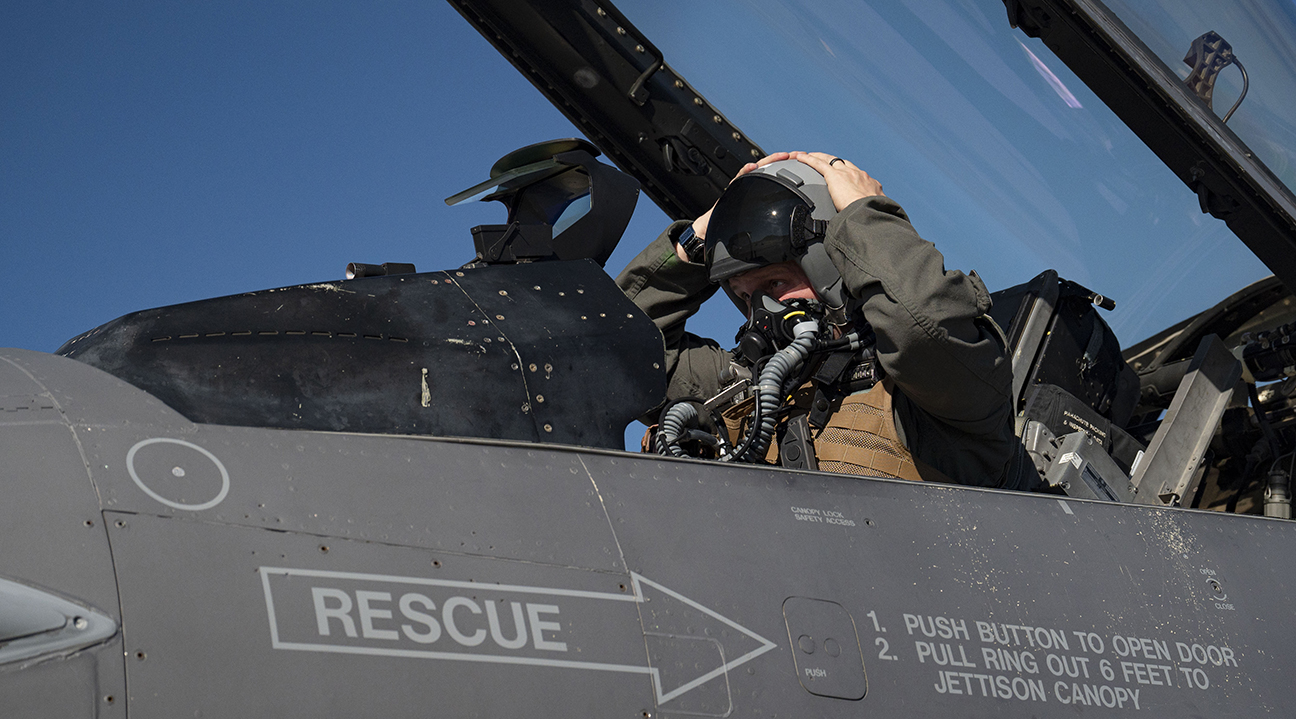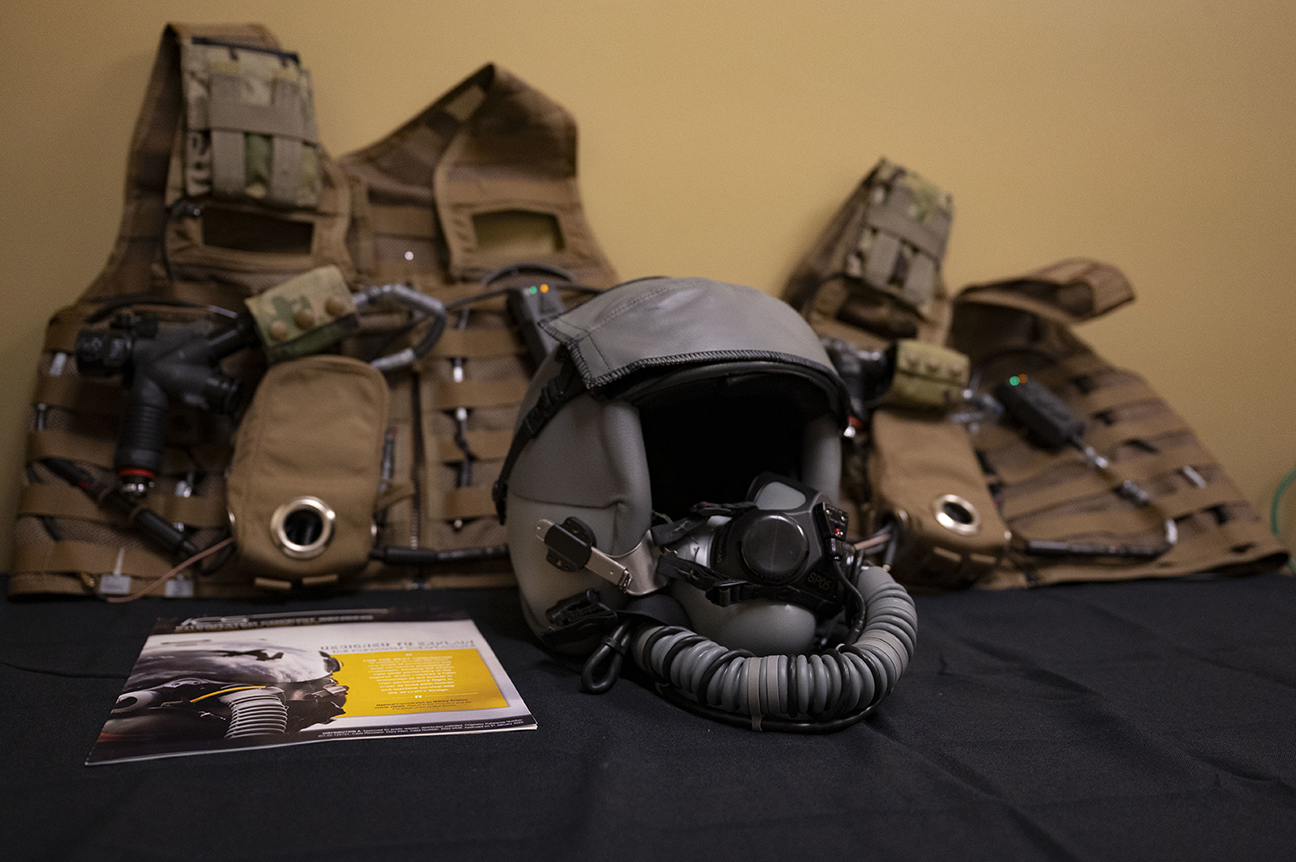WHAT IS IT?
The ICS system provides a modular, airworthy platform for comprehensive physiological, life-support and environmental monitoring to improve pilot safety and performance. A team from the Air Force Research Laboratory’s 711th Human Performance Wing, Human Effectiveness Directorate began developing the system in 2020 and flight tested it on the F-16 in 2024. Scientists and engineers designed the system to identify, explain and mitigate in-flight physiological events. Ultimately, the warfighter will benefit from increased understanding of combat aircrew physiology during flight, allowing for multiple paths to improve aircrew safety and effectiveness.

U.S. Air Force Lt. Col. Joshua Arnall, director of operations, 59th Test and Evaluation Squadron, prepares to flight test the ICS system on an F-16 at Nellis Air Force Base, Nevada, Jan. 30, 2024. An Air Force Research Laboratory team developed the ICS system to provide an airworthy platform for comprehensive physiological, life-support and environmental monitoring to improve pilot safety and performance. (U.S. Air Force photo / Senior Airman Megan Estrada)
HOW DOES IT WORK?
The current iteration of the ICS system includes helmet-based, base layer and life-support sensors that provide physiological, time-aligned data in a single package, ensuring holistic information on the pilot and operating environment during flight. It provides onboard analytics and alerts to the pilot without significant additional workload. The data helps researchers look at risks such as hypoxia and cabin depressurization as well as stress responses to different phases of flight.
The ICS system measures:
- Breathing air pressure and oxygen levels
- Cabin pressurization
- G-force loading
- Physiologic responses

An Integrated Cockpit Sensing, or ICS, system with helmet-based, base layer and life-support sensors prepares for flight testing with the 422d Test and Evaluation Squadron at Nellis Air Force Base, Nevada, Jan. 30, 2024. An Air Force Research Laboratory team developed the ICS system to provide an airworthy platform for comprehensive physiological, life-support and environmental monitoring to improve pilot safety and performance. (U.S. Air Force photo / Senior Airman Megan Estrada)
WHY IS IT IMPORTANT?
The Department of Defense has ongoing concerns regarding physiological events impacting pilots of training, fighter and attack aircraft with both the U.S. Air Force and U.S. Navy grounding aircraft and expending considerable resources in search of causes and solutions. Ongoing research and development efforts seek to improve the scientific understanding of physiological performance in these environments.
The idea for ICS came from the need for an in-flight platform that would merge sensors and data in real time and provide that feedback to pilots. Prior to ICS, investigators merged existing data from sensors after incidents to determine what went wrong. Cockpit sensing remains a key gap as there are no fielded solutions to provide data for root cause analysis, which in turn could drive pilot decision making as well as resource prioritization for life support systems modification.
“OUR TEAM’S WORK IS ABOUT ENSURING THE COCKPIT ENVIRONMENT THEY’RE OPERATING IN IS SAFE SO PILOTS CAN COMPLETE THE MISSION AND COME HOME SAFELY.”
– Chris Dooley Lead ICS engineer, AFRL Human Effectiveness Directorate
Additional Reading Material
INTEGRATED COCKPIT SENSING | FOCUS APP
